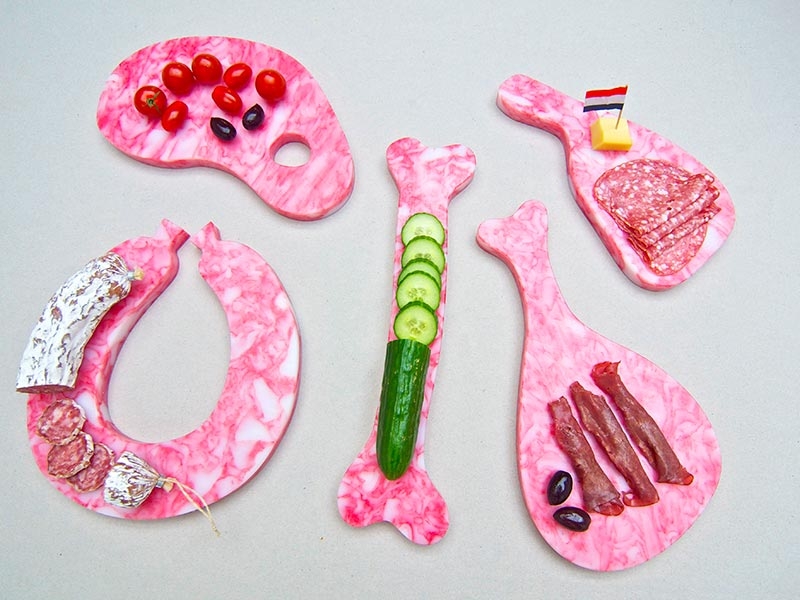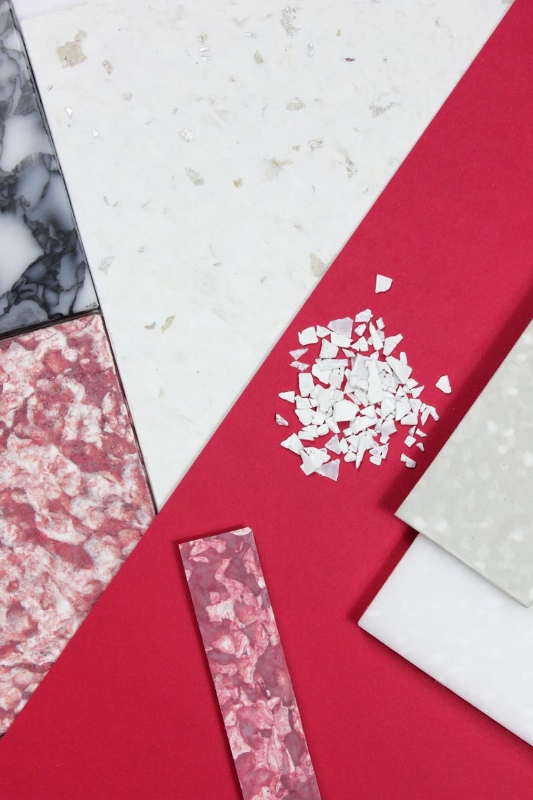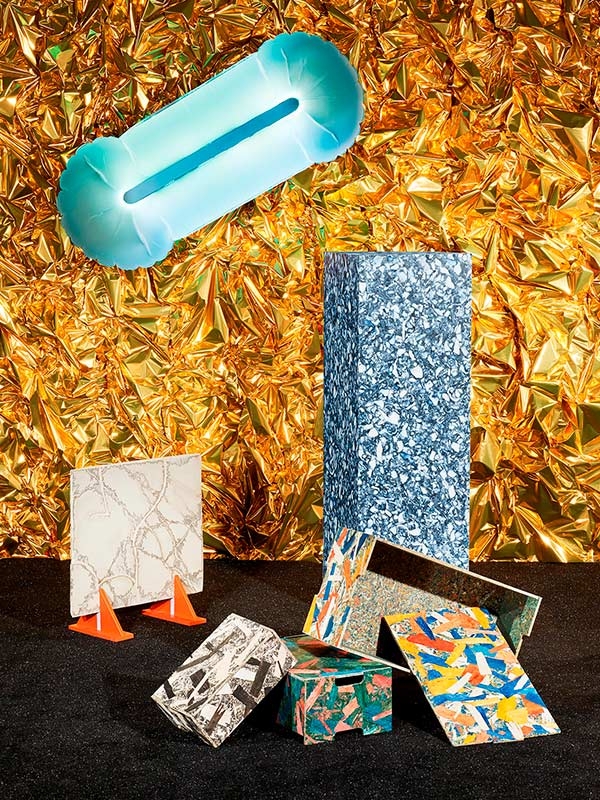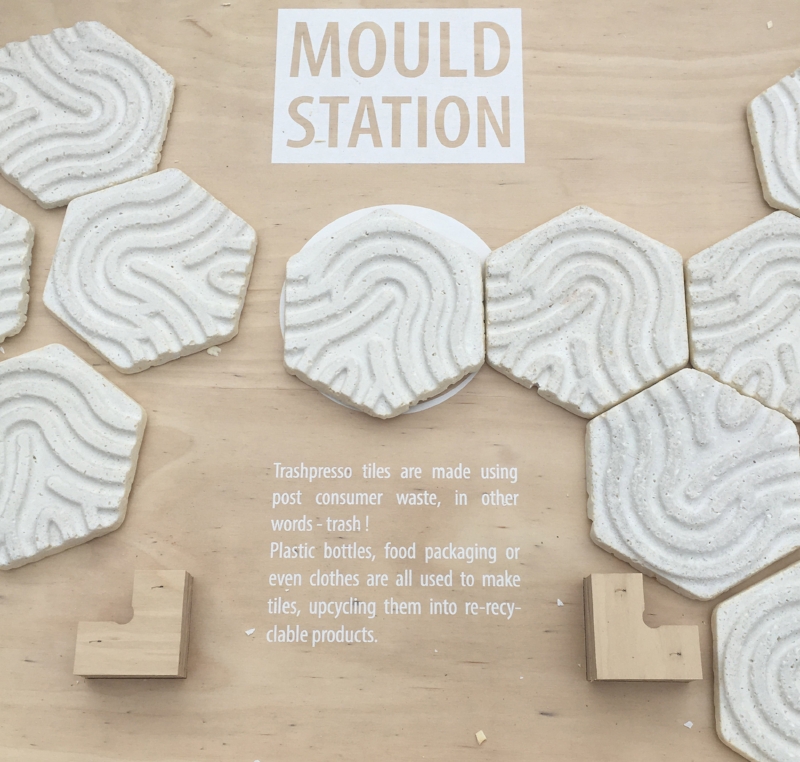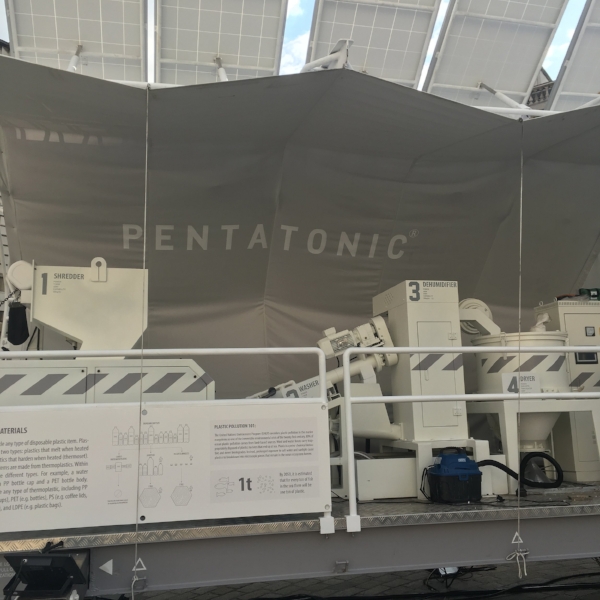RESPONSIBLE BY DESIGN: Living in a material world
Clothing starts with a vision, a story. And it starts with fabric. We source at the very beginning of a collection, our inspiration is enhanced by the fabrics we touch and experiment with. There is a close relationship between the textile mills and designers, feeding off each other for inspiration on what's next.
But to initiate a change towards sustainable fashion, all key players from emerging designers to corporations have to go further than the aesthetic beauty of a surface and how it informs the concept, construction and cost of a garment.
We must take a close look, however hard that may be, and examine the raw materials we use/ extract/ combine to bring our creations to life. And how the effort to put into existence our products is potentially harming our planet.
In this article, we look at how fiber and material is at the root of the change.
IN THE BEGINNING
Following on from our Beginners Guide to Sustainability, this is a further read into the eco narrative of modern fashion. This topic is of course a cosmos of its own; there are various systems at play, contributing to the bigger macrocosm. Discussed in this article is one of the hotter spots of activity; but it is also personal to our own field of study and experience.
So, let’s talk Textiles. An often overlooked and undermined point of subject in the industry; from the drawing rooms of fashion retail houses to the education of fashion students, there simply is not enough emphasis on the makeup of fabric. Arguably, this is where it matters the most. It is the development of cloth; the intensity of the crop cultivation and treatment, the extraction and chemical processing of Polyester and MMCs (Man Made Cellulose) that are creating ecological and social consequences.
I- ARE WE DETERMINED TO REFASHION?
We already know the facts regarding our abusive practices; the fact that it is costing human lives, women are disempowered and the industry is adding to the catalyst of climate change –Fashion’s CO2 emissions are projected to increase by more than 60% to nearly 2.8 billion tons per year by 2030. The industry has been and is aware of the harm it does but we have not reacted effectively. Yet.
As an industry, we need to understand material. It’s more science than stitch. Look at the routine of other leading industries of the future- technology, automobile and building engineering, medicine; they make observations, conduct experiments and through research and analysis reach educated solutions to answer the struggles facing the current environment.
Global Populations continue to expand and the middle class is growing too. According to the UN, the population will be over nine billion by 2050, with the middle class increasing to five billion by 2030. Naturally this means rate of fast fashion is rising not only out of necessity but the increased trend to shop as a part of an affluent lifestyle will be growing especially in more developing countries.
Since a strong consumerist nature is on the agenda; it’s not like we can deny people of wanting things however we have the utmost power to make those things as wholesome and good as possible. To set the trend and behaviour of consumption as a truly modern and conscientious one.
This is already happening, C Space is convinced Generation Z with tech savvy, ever constant influx of information means bad habits cannot be hidden and transparency is well regarded . The objective of clothing is to be in vogue yes but to also keeping in style with values and demands of full accountability. So how businesses respond now is not only to bring benefit for the practice of design and the betterment of worldly welfare, it is a matter of success and even survival in financial terms.
II- SO WHAT NOW?
We have established you have to make ethically and sustainably sound garments but how and where to begin?
There is a collection of names who are leading the way, conquering with designs and concepts of effortless grace and seduction. See this is the thing; gone are the days of associating good natured fabrics with forest grey hemp leggings and ecological hippies.
Sustainability IS sexy; it is attractive to be smart and attain an empathetic living.
In the industry, having a deeper sense of materiality strengthens the zeal for conscience. To fully learn the individual components of materials thus their impact moves us to rethink sourcing, manufacturing and production. This guide introduces you to the inner workings of fiber, properties and so forth. It’s especially for designers; to inform your meetings with your suppliers as you’re about to start sourcing for your next season with Premiere Vision and other fabric tradeshows around the corner. If you don’t already, open the conversation with your fabrics mills, ask the question, go deeper to find out how your fabrics are made and this in turn will let your suppliers know about your concerns and then it becomes a positive cycle of improving the supply and demand chain towards eco-consciousness.
THE COMMON DENOMINATORS
The most effective way of making improvements is by addressing those highest rating offenders. Resources we use most and finding an alternate future for them. This is how brands are currently progressing too and within each fibre or process one finds there are greater more ideological element of change happening too.
I- Cotton
The expletive C word of the fashion century, the 5000-year-old crop is notorious to environmental degradation (The shrinking Aral Sea is a testament to this). There is organic cotton you say; yes, it is better in terms of the lower intake of pesticide and elimination of GMO crops and it is very positive to see the wider adoption of organic farming across the brands. However organic cotton demands more land and thus more water due to crop lost to pests. Arable land is already a scarcity and in developing countries the mission to find more leads to the destruction of forests and natural habitats.
Throughout this article; there is going to be one key philosophy that is basically the gateway to true sustainability; the concept of circular economy. The principle that once maximum extraction of a resource is achieved it can become a raw resource again to be born into a new solution, infinitely in a closed loop. That is the answer to our future.
Used cotton from garments and interiors past can be diverted from landfills to be regenerated into new cloth. Scientists at KTH, the Royal Institute of Technology, in Stockholm through research has found a system for just that; Re:newcell recycles textile; grinding down cotton among other materials to pulp into fibre into yarn into cloth into garment. Closed loop just like that. The scalability is apparent; H&M has already partnered with the company as part of their goal to use 100% recycled material or other sustainable source by 2030.
"Re:newcell´s technology has the potential to become a commercial and scalable solution for the industry and accelerate the journey from a linear fashion industry towards a circular one", says Cecilia Brännsten, Acting Environmental Sustainability Manager and circular economy lead, at H&M group.
So far there is only one plant in Kristinehamn, Sweden, but it’s a model that can be set up internationally, we can even recycle on a closer, tighter community level reducing further transport emissions.
Understandably this setup is going to take time to come to fruition and due to the more technological operation of it; it will require trained and equipped personals. It’s important to recognise that derivation of crops is a global industry, a livelihood for millions. Agriculture of textile crops is not going to disappear in the near future and even if we want to reach a place where we maintain a fully recyclable system then it has to come with resolutions for everyone; jobs and means of living as it is now will not be discarded but instead channelled into new ventures.
This is why we can improve the type of farming we do thus still helping on a significant scale. Alternative crops such as hemp is a strong contender. A low maintenance robust crop which grows readily in most temperate or subtropical climates and is even capable of growing in conditions similar to the Arctic to the Equator. It grows rapidly and requires low inputs of agro chemicals and water making it a very efficient choice.
Organic hemp can subsidise cotton consumption but not enough investment is happening in the cultivation currently; Robert Hertel CEO at HempAge puts this down to the decades of demonisation of the crop which is hindering its demand in the market. Pro- hemp entrepreneurs are gaining traction and the dogmatised weed can have a bright future but it has to take on a rather outdated mind-set and bring about consumer awareness of positive cultivation.
Linen is the oldest textile we have, the ancient Egyptians associated the fibre with light, purity and wealth. More importantly it is saintly throughout its life cycle, in a report initiated by the Stella McCartney research team, the SCS Global Services Report(see resources below) assessed and compared man-made fibres in which flax fibres production done favourably in every category of impact from human health risks to regional acidification. Such a valuable resource should be tapped into, especially in Europe where the cooler climates are most suited for the crop. The primary use of linen in interiors can definitely move into fashion.
II- 2/3 of the industry is Polyester
A non-renewable source derived from extracting petroleum, it is imperative to reform our plastic clothing consumption. Since it is a non-biodegradable fibre; the devastation of such fabrics are really in their post life- in landfills, oceans and water systems, unchanged for centuries. Here also, it is a call for circular economy to close the loop in the production of polyester. Currently only 7% is recycled, leaving a morbid 93% of virgin poly fibres into the mainstream. Recycled polyester is a very attainable goal; plastic is unanimous within our society so yes the highest priority is to cut down altogether but even with the things that exist now can be redirected via a design revolution. So like Re:newcell, suppliers delivering recycled polyester are increasing; Loniqa, Hyosung, Teijin and THREAD are enabling designers and makers.
Sure enough it is possible to effortlessly incorporate 100% recycled polyester into your collection as done by ARMEDANGELS, ECOALF and MiniRodini and inspiration reaching out to hard surface interiors like SMILE Plastics.
Flowering out of the branches of circular economy; Bio Mimicry is a compelling force of nature we can harness in the campaign for better fibres. This field of innovation is bringing design solutions directly informed by the ecosystem. The natural world does not waste, it has programmed a very seamless cycle of renewal- take carbon dioxide into oxygen, the water cycle, renewing seasons of spring to winter. It is in the bio economy; one can enclose the production of renewable biological resources and converse such assets and waste streams into valuable products in food, feed, energy and textiles. Bio based materials are already at a scalable capacity:
Orange Fiber, the Italian start-up taking 700.000 tons of citrus waste that come as a by-product of the food industry and moulding fabrics for high fashion; the seal of quality so renowned with Italian goods is preserved with this brand.
Vegea is another Italian ecological producer; this time from wine to leather. The winner of PETA’s fashion awards 2017 , this brand is already confirmed orders with luxury design houses for when the plant based leather hits the market next year.
Moreover, Textile Bio and Ecovative are pioneering grown textiles; with mushroom built technology; leathers can be lab grown in just 9 days.
III- Biological developments are essential to improving the circumstance encompassing MMCs (Man Made Cellulose)
This is an obscure area since viscose and other semi synthetics are plant based therefore hailed bio degradable and a green choice for the market. However, it’s the steps in pulp to viscose fibre that has a severe environmental and human health impact. The mainstream manufacturing is chemically intensive; to begin it is treated with sodium hydroxide, then aged with carbon disulphide, further bathed in a mix of sulphuric acid, sodium sulphate and zinc sulphate. Finally, a stage of after treatment to wash, bleach and dry the fibre.
Toxins such as carbon disulphide is a dense, highly volatile liquid to which workers exposed to high concentrations are known to suffer from neurological, psychiatric symptoms and further reports of leukaemia, chronic skin conditions, kidney diseases and a correlation between carbon disulphide concentrations and the rate of miscarriages among female workers.
The grey water footprint (a water pollution metric) is the largest contributor to viscose’s total water footprint in all stages of production, representing more than 90 per cent of viscose’s total water footprint. The lack of responsibility combined with the limited exposure regarding practices in the supply chain calls for serious review.
Clean production technologies can only come about if brand transparency is pursued more crucially; pressing brands, especially those claiming a green label under plant based synthetics to reveal all parts of the process. Canopy Style is doing a commending job of enforcing commitments on leading industry names; under the Canopy Style pledge companies agree to ensure MMCs are not sourced from ancient or endangered forests. The world’s two largest producers; Lenzing and Aditya have already undergone a third-party audit to assess risks and correct the system. Lenzing has implemented reform with the introduction of a Lyocell fibre Tencel and Refibra; both regenerated fibres that are carefully process with non-toxic spinning solvents in a closed loop system.
Design houses fashioning these materials confidently, to name a few are Patagonia, Reformation and Stella McCartney. McCartney is one of the array of outstanding practitioners in positive design. The discipline of sustainability is gracefully conducted because it not actually the ultimate emphasis of it. The brand creates beautiful clothing. It is concisely drawn, patterned, made and portrayed in desiring narratives. This is powerful. To inform one that nothing has to be taken away, no creativity or genius stripped out. Designing with conscious tools and theories are not a supplementary requirement but a philosophy that can seamlessly fit with what as designers, we have always wanted to express: the stories, the fantasy and escapism given by fashion.
LAUNCH talks to the founders of Renecell
THE INSTIGATORS
The advancement in our knowledge through research and prototyping is the threshold to change. Industries all around progress in such manner; it begins from a foundation of historical expertise however is then built on current and emerging learnings and technologies. “The only thing constant is change” and in fashion this is evident with trends and seasons. It is time we channel the constantly changing ideal to the making as well as concepts.
The instigators lie within a number of things.
Education is not be underestimated; the next generation taught to explore fibres and approaching fashion like you would approach components in a scientific or engineering study can make radical thinkers of the future. Parsons fashion design programme is one to follow; Program Director duo at BFA Fashion Design Burak Cakmak and Fiona Dieffenbacher are futurists who believe that fashion has a duty to go beyond clothes, understanding graduates are to go into a world that is interlaced with tech, AR, AI, engineering, and biology, and more. There is a focus on the purpose of design and the designer.
Consultancies such as Fashion Tech lab, Material Driven and Ma-tt-er observe materials the way atoms and cells are, microscopic. The properties of a single plant or compound can be polymorphic; we can demand new conversations from fibers traditionally known to only tell a certain story. In turn you challenge your own narrative and the structure of the tale.
“You want to understand the source of the materials, so it’s raw state and where it comes from, how it’s processed, its current purpose and how it degrades and then it’s potential to be reused in some way.”
Seetal Solanki explains regarding life cycles of circular design.
Circular economy altogether fulfils the aim of sustainability. It demands a physical and psychological shift in design. It is work because we have to be sensitive to the entire system; sustaining means enduring livelihoods for all- so for the farmers currently farming conventional cotton too.
It’s questioning methods of living on a very individual level actually; what can I implement in my job, lifestyle and thinking. LAUNCH and The Circular Design Guide seek to accelerate these transitions; The Circular Design Guide [a platform launched by the Ellen MacArthur Foundation who released a very recent report on the circular principle] takes you through step by step methods and tap into mind-sets needed to regenerate thinking. The demand has to come from everyone; consumers to retailers to manufactures to suppliers to producers. This entitlement of knowing brings integrity and liberty.
People love what already exists so we have to make sure it is the same as it ever was; fabrics that have been tried and tested to work and this familiarity built on history is not one we need to depart from. Luxury fashion houses Stella McCartney, Mara Hoffman, Tomenyc, Christopher Raeburn to street wear collectives ARMEDANGEL or DEDICATED have proved aesthetics are no compromise and the sense of touch be it in silk, leather, cotton or jersey still exist in reformed choices.
The freedom that fashion promise is what anchors our everlasting need for it; growing, making, wearing and living in material is symbolic to our identity as human kind.
We have all known the ability of garments to possess a story, a memory or a fantasy and THAT is what our love has always resided in season to season; not consumerism. Ultimately this is what we must sustain.
| By Angel Philip | Editor Geraldine Wharry
Resources
Future fabrics Expo http://www.futurefabricsvirtualexpo.com/
Smart Creation at Premiere Vision https://www.premierevision.com/en/presentation/eco-friendly-production/
The Sustainable Angle http://www.thesustainableangle.org/who-we-are/
Visit our 'Responsible By Design' Pinterest board here









